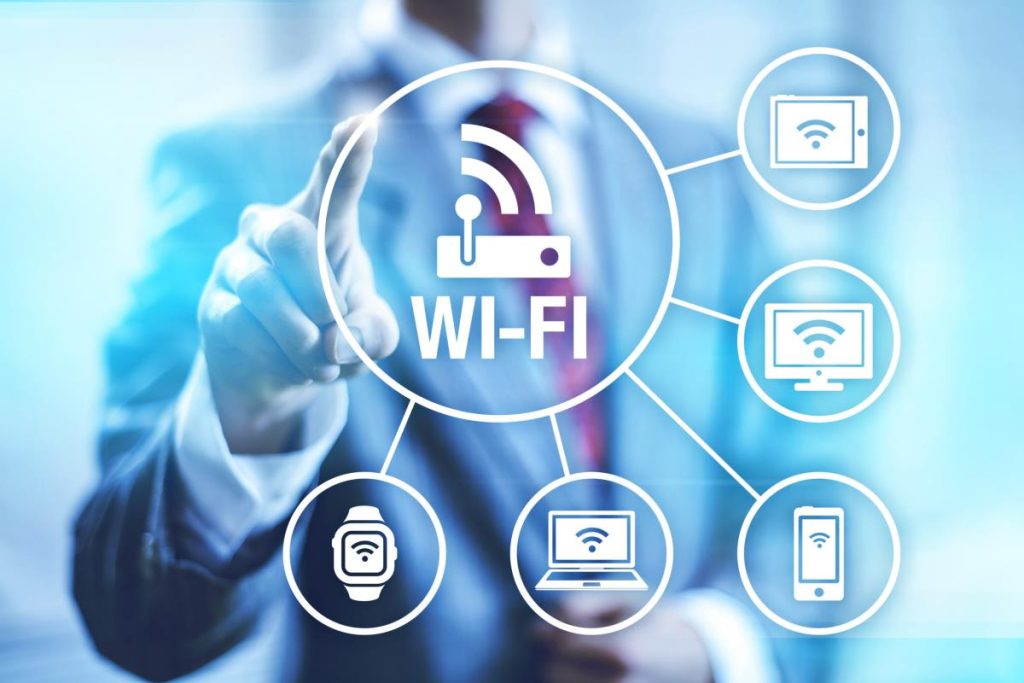This type of networking is based on the IEEE 802.11 family of standards. The most popular uses of Wi-Fi are Internet access and local area networking of devices.
History of WiFi
Using radio waves, WiFi allows you to connect to the internet from any location without the need for cables or wiring. In the 21st century, WiFi has become an important part of the Internet of Things.
It is a network of devices that are embedded with electronics. These devices include home appliances, cars, buses, and more. They allow you to exchange information and access vital information. These devices are referred to as smart home devices. They are connected to the internet and can help you reach your destination in a short amount of time.
The history of WiFi began with a simple home radio. In the 1880s, Heinrich Wilhelm Hertz discovered radio waves. Hertz’s name eventually became the unit of frequency measurement.
2.4Ghz and 5Ghz bands
2.4Ghz and 5Ghz are the radio frequency bands used to send and receive information on a wireless network. They are also known as Wi-Fi. These bands are used by various devices such as wireless phones, baby monitors, cordless phones, and microwave ovens.
In terms of data transmission, the 2.4Ghz band is a lot better than the 5Ghz band. The 2.4 GHz band is better for long distance data transmission and for carrying data over solid objects.
The 2.4 GHz band is a bit less crowded than the 5 GHz band. This is because of the difference in the number of channels in each band. There are eleven channels in the 2.4 GHz band and there are 25 non-overlapping channels in the 5 GHz band. This is a good thing since it means less interference.
Operational range
Using WiFi to the max is an underrated feat of modern day computing etiquette. There are a few pitfalls to avoid, and many of them have a simple fix. In the spirit of transparency, I have scoured the web for the best suited solutions, all of which I will list below. The following list is a wholly assembled collection of vetted companies. In the end, I have tipped my hat to a few worthy winners. After all, I am an industry octet of seasoned professionals, albeit ones that I’m sure have some kinks of their own. If you’re in the market for a new networked office space, you’ll have plenty of companies to choose from. In the process of evaluating each of them, I’ve learned a few new tips and tricks.
Wireless fidelity
Getting a high speed Internet connection is no small feat, but there are a few tricks of the trade to make it happen. One of the more notable features is a system known as Wireless Fidelity, which allows the exchange of data via radio waves. Wi-Fi is often considered a novelty, but it has become popular in many parts of the world where wired connections are a distant memory.
Wi-Fi uses a standard radio protocol known as IEEE 802.11 for most of its life, but is not limited to this network. It is a comparatively simple technology, but requires a lot of effort to make it work. In its most basic form, it is a collection of devices that can communicate with each other, using wireless channels in the 5 GHz range.
Secured WIFI
Whether you are a business, employee or consumer, it is important that you understand the difference between unsecured and secured WIFI. Unlike unsecured WiFi, secure networks require a password to access. You should also be aware of the risks of public WiFi and how to keep your data safe.
In order to make sure that your network is secure, you should always use a VPN. You should also consider content filtering. Having a firewall and anti-malware software is also a great way to protect your data.
Most secure wireless networks are locked with Wired Equivalent Privacy (WEP) or WiFi Protected Access II (WPA2). These encryption keys are generally used to lock a WiFi network.
However, there are some exceptions. You should check the terms and conditions for the secured WiFi network before connecting. You may be asked to provide your email address and other personal information. You should never reveal your login information to strangers.

